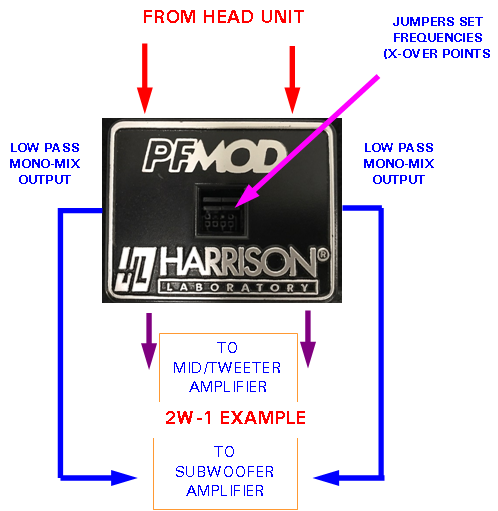What
@fpitas said -- the problem is subs tend to be physically away from the mains so you need extra delay someplace... For my first sub, a DIY servo job with active electronics, I incorporated an all-pass filter to adjust the phase to the mains.
For about 10 years I have been using these on my pair of Radio Shack floor firing SUB Cabs, (the larger of the 2 subs that they built, black in color), each fitted with a 12" Pioneer dual 4 Ohm voice coil (circuit set up to be seen as a single 4Ohm circuit) car audio speaker that has a 20Hz-80Hz FR. My mains are 26Hz-20KHz +-2DB (Dahlquist M-905's). They sit on top (so phase is not an issue (the room is not symmetrical so the subs do not see the same thing as far as standing nulls are concerned) of the SUB's. Each sub has one bridged mono NAD 2200 amp and the mains have a NAD 2200 in stereo.
[IMG alt="Text Box: LP1 FOR WOOFER AND SUB-WOOFER AMPLIFIERS #900091
42, 44, 46, 48, 50, 52, 55, 58, 65, 70, 80, 85, 100, 120, 150, 200 HZ LOW PASS
NEW! HP-SUB ADJUSTABLE SUB-SONIC FILTER
20, 25, 30, & 35HZ HIGH PASS FILTER (Blocks Rumble)
HP1 FOR MIDRANGE AND TWEETER AMPLIFIERS #900101
50, 70, 100, 150HZ HIGH PASS CROSS-OVER
2W1 FOR 2 WAY SYSTEMS #900121
50, 70, 100, 150HZ HIGH PASS AND 42, 44, 46, 48, 50, 52, 55, 58, 65, 70, 80, 85, 100, 120, 150, 200 HZ LOW PASS
HIGH AND LOW PASS CAN BE SET TO DIFFERENT FREQUENCIES
"]
https://www.hlabs.com/products/crossovers/index_files/image800.png[/IMG]
[IMG alt="Text Box: FOR HOME OR AUTO USE/
REQUIRES NO DC POWER OR POWER WIRING
18 DB/ OCTAVE LOW PASS / 12 DB/ OCTAVE HIGH PASS (subsonic)
ADDS VIRTUALLY NO NOISE OR DISTORTION
"]
https://www.hlabs.com/products/crossovers/index_files/image765.png[/IMG]
)

